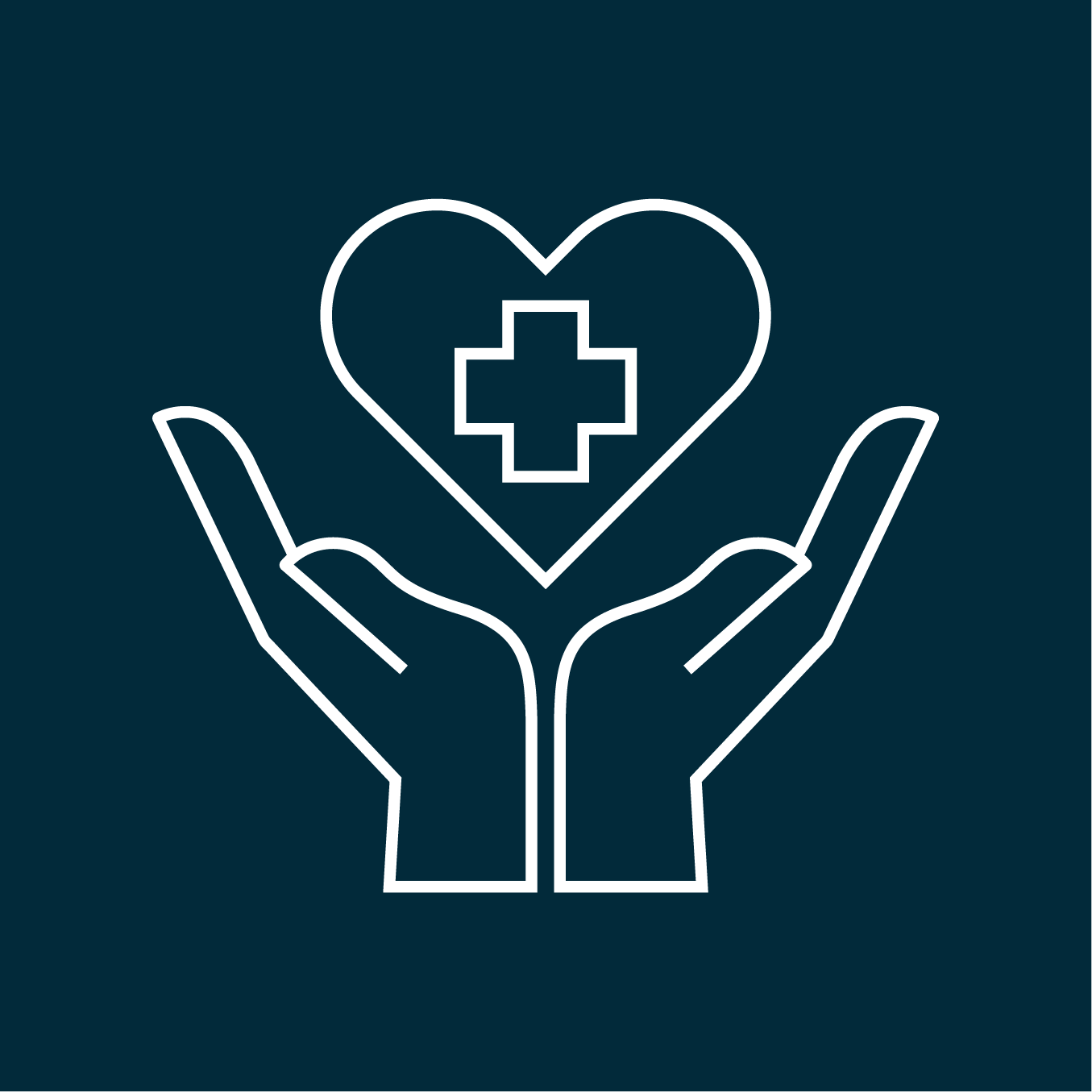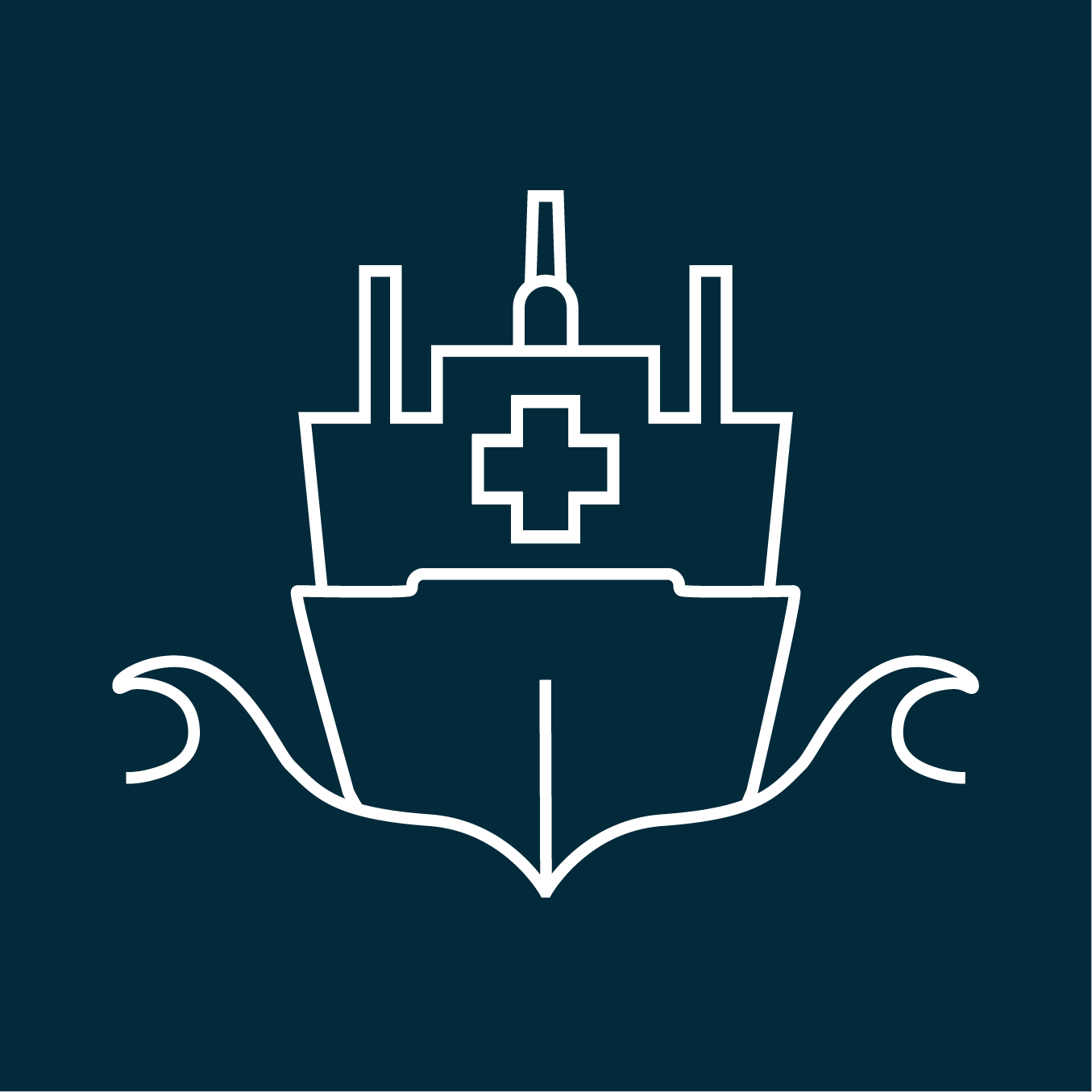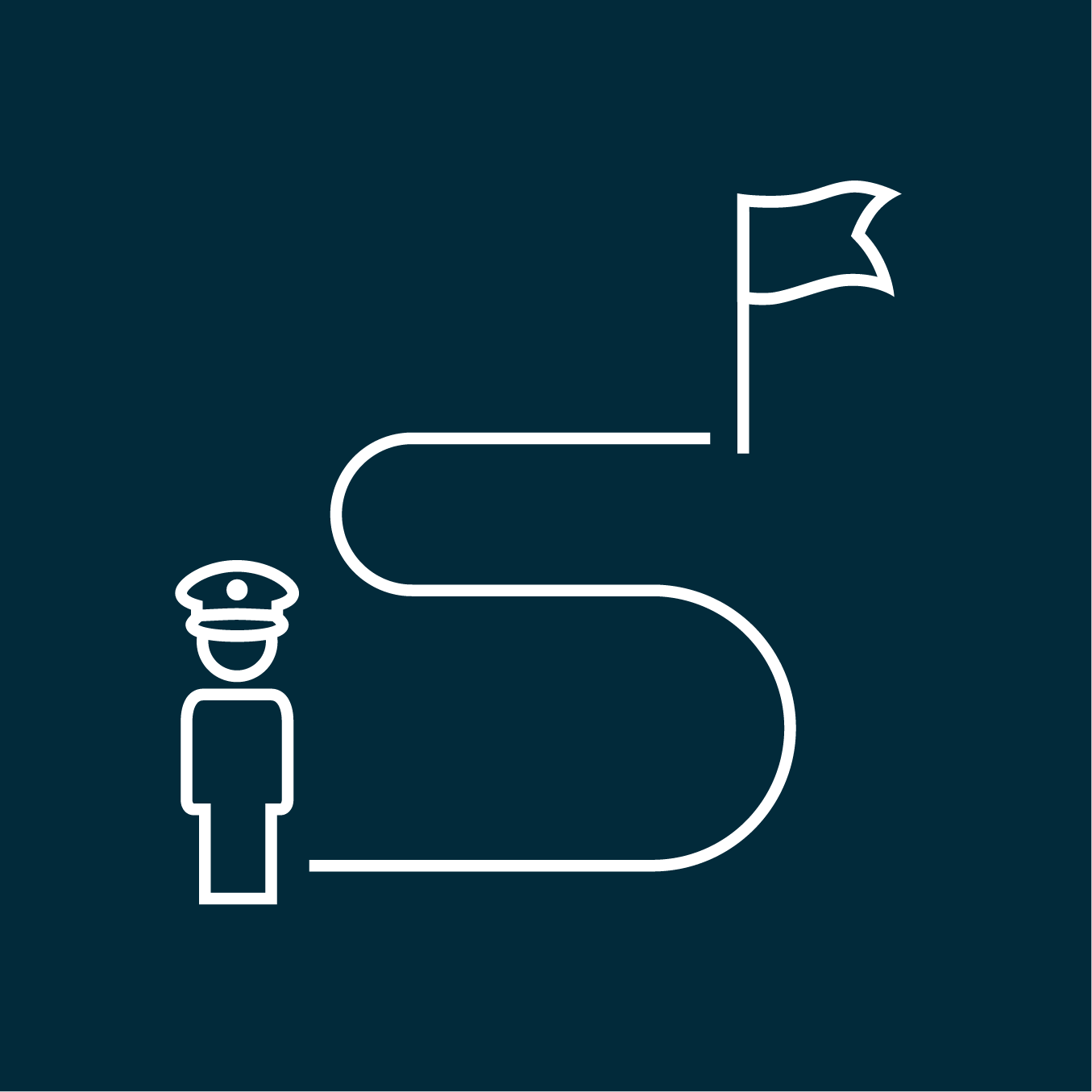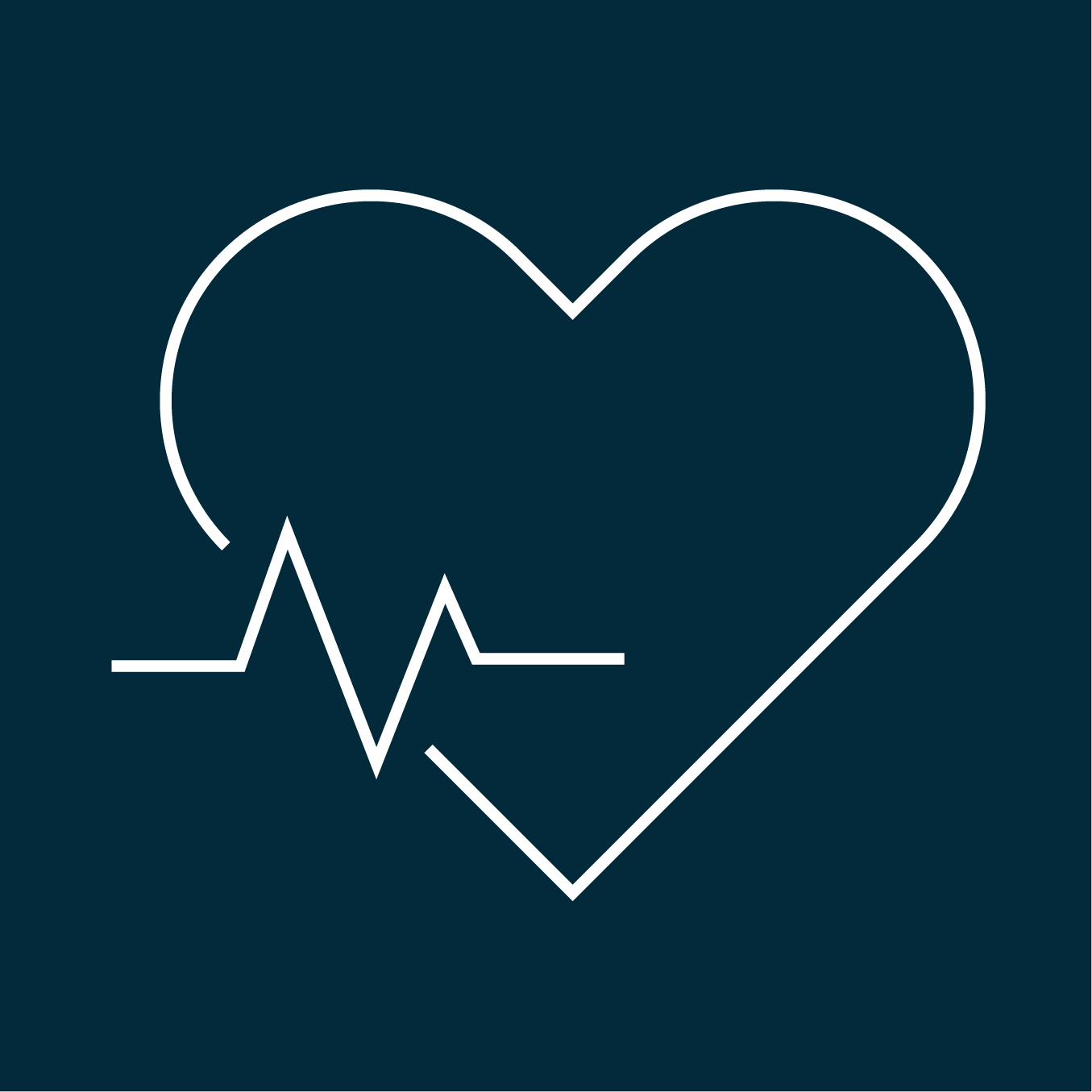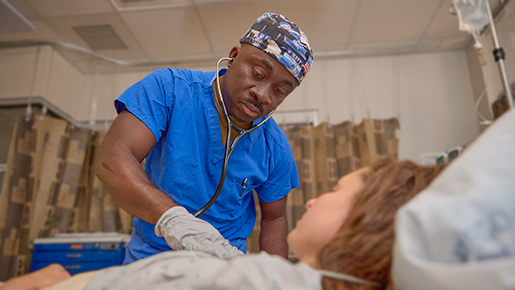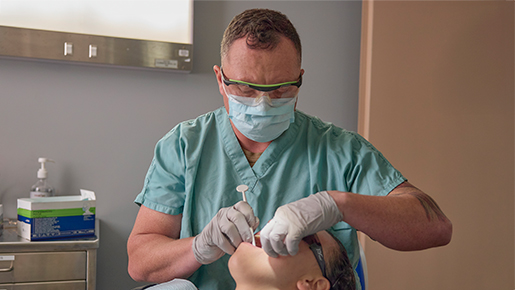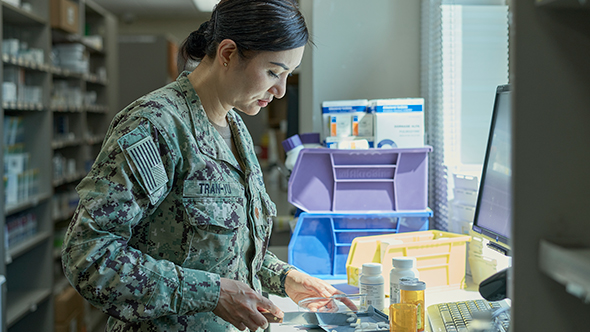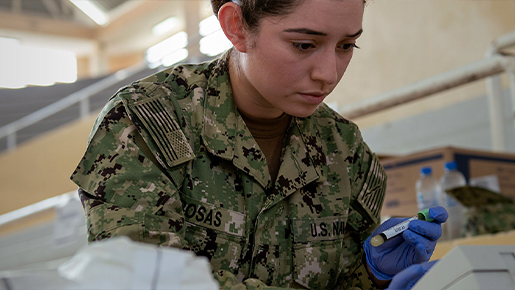All Sailors must go through some variation of military training. This depends on whether you’re an Officer, Enlisted or have prior experience in the military.
Enlisted Medical recruits (Hospital Corpsmen) are required to complete Boot Camp. Once completed, Medical Recruits report to Hospital Corps “A” School (19 weeks) in San Antonio, Texas, for training on basic principles and techniques of patient care and first aid procedures.
Physicians do not report to Boot Camp. Upon graduating from medical school, physicians are required to attend Officer Development School (ODS) to learn the responsibilities of Navy Staff Corps Officers. Here they learn about the military structure of the U.S. Navy, its rich history of traditions and customs, leadership development, and military etiquette. This is a five-week program.
For more details about your particular situation, talk to a Navy Recruiter.




































































































































